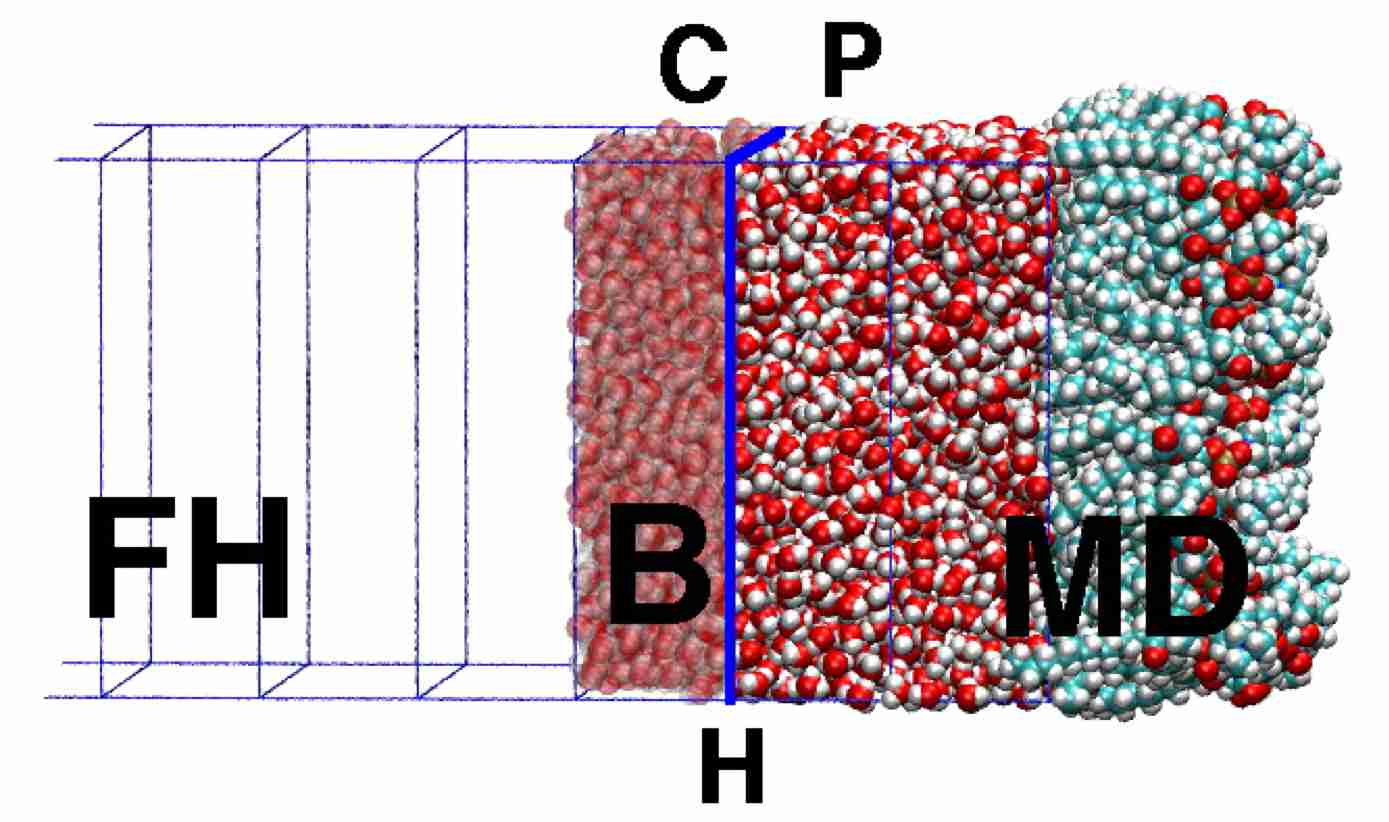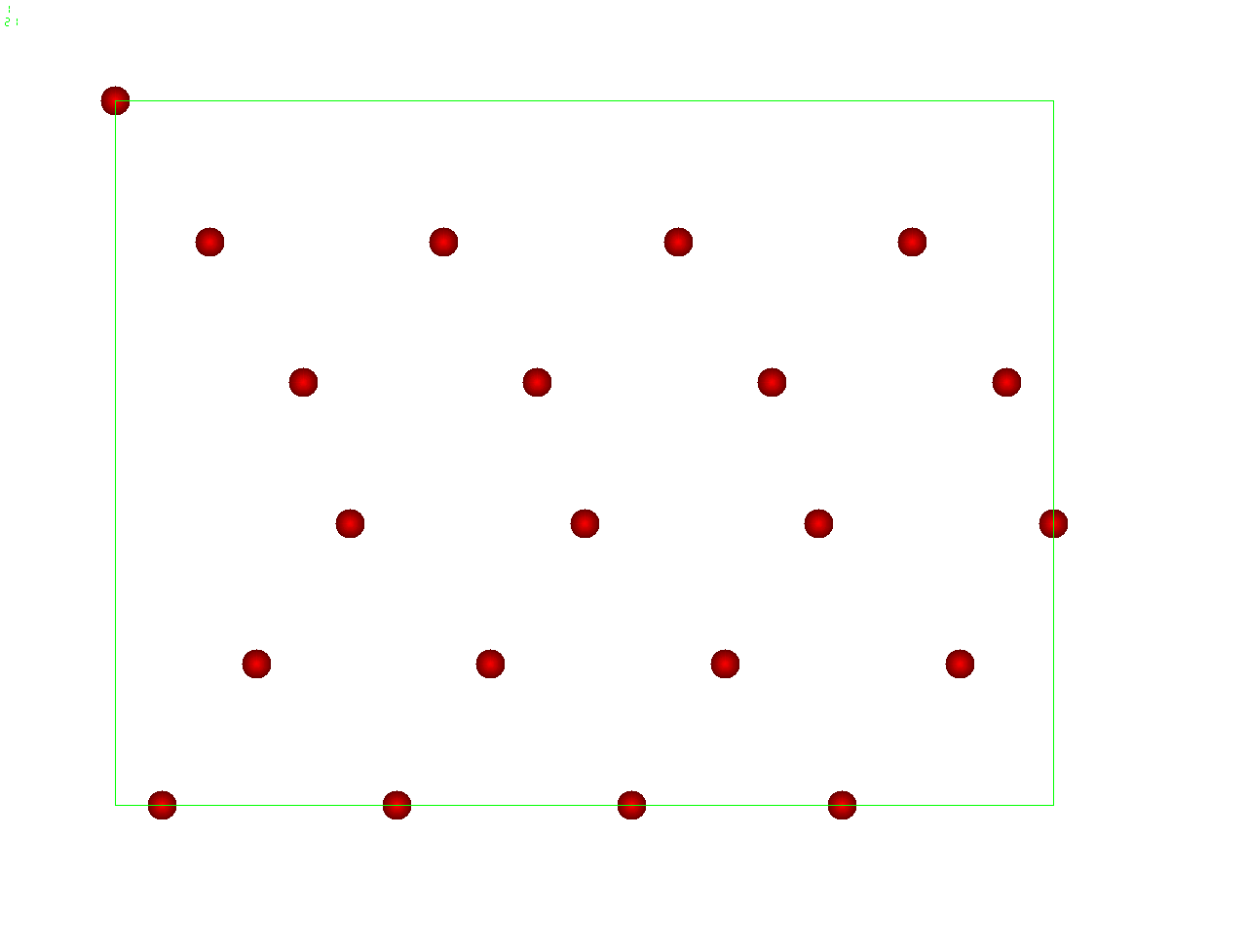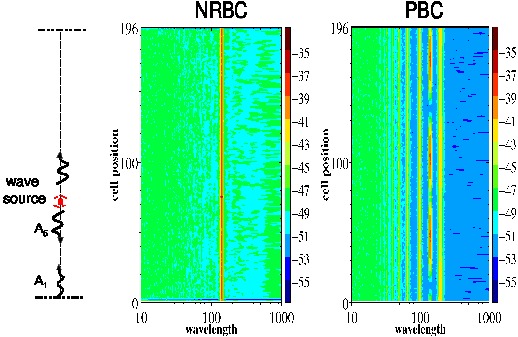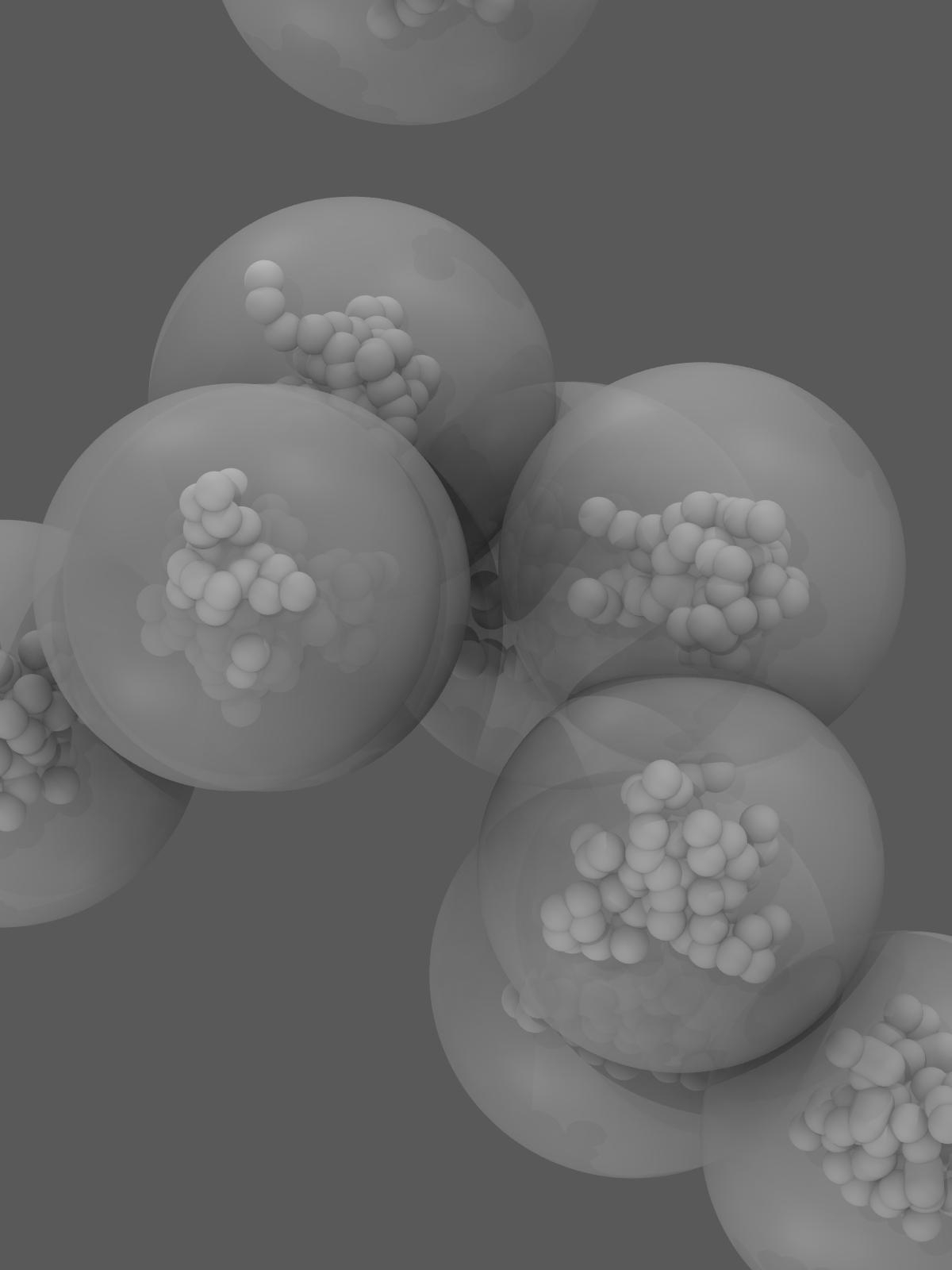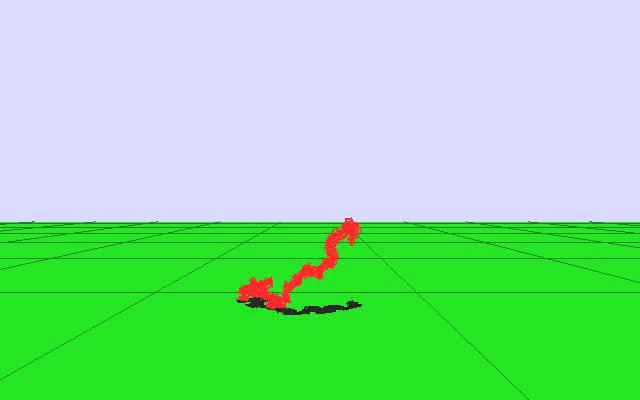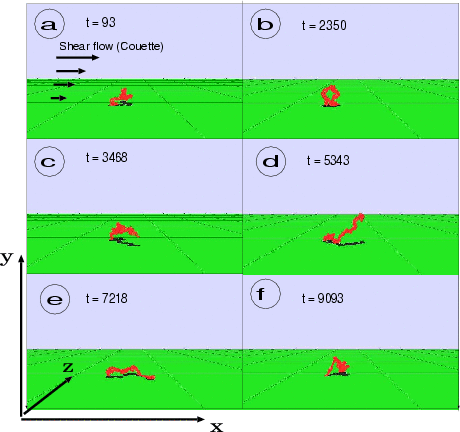Multiscale modelling: molecular/continuum hybrids
Fluctuating hydrodynamics
Particle hydrodynamics
Polymer dynamics
Capillary waves
Coarse graining with proper dynamics
Some talks in pdf
HybridMD: coupling molecular dynamics with fluctuating hydrodynamics
Multiscale modelling of liquids with molecular specificity
The separation between molecular and mesoscopic length and time scales poses a
severe limit to molecular simulations of mesoscale phenomena. We describe a
hybrid multiscale computational technique which address this problem by keeping
the full molecular nature of the system where it is of interest and
coarse-graining it elsewhere. This is made possible by coupling molecular
dynamics with a mesoscopic description of realistic liquids based on Landau's
fluctuating hydrodynamics. We show that our scheme correctly couples
hydrodynamics and that fluctuations, at both the molecular and continuum levels,
are thermodynamically consistent. Hybrid simulations of sound waves in bulk
water and reflected by a lipid monolayer are presented as illustrations of the
scheme.
Modelling the mesoscale with molecular specificity,
Phys. Rev. Lett. 97, 134501 (2006). pdf file
Co-worker:
Gianni De Fabritiis
go to the top
Open MD: molecular dynamics for open systems:
One of the requisities of the hybrid particle-continuum models is that the
molecular system has to be open . In other words, mass, momentum and
energy have to be transfered from and to the MD domain to the outside world.
As an important byproduct, HybridMD provides a route to perform
molecular simulations in the grand canonical ensemble, preserving the
correct dynamical properties at the MD domain. Note that previous simulations
in the GC ensemble were either MonteCarlo (dynamics are not solved), or
do disrupt the dynamics of the MD domain by brute force particle insertion. The
present algorithm only affects a small particle buffer at the MD borders,
where the particle exchange takes place and external pressure is
imposed. In fact, just like in a real confined system.
Triple scale modelling: AdResS - hybridMD
In this work we construct a triple-scale simulation scheme for molecular
liquids which concurrently couples:
atomistic, coarse-grained and continuum descriptions of the liquid.
The presented multiscale approach covers the length-scales ranging from the
micro- to macro-scale and it is based on a combination of two dual-scale models:
the particle-based
Adaptive Resolution Scheme (AdResS) , which couples the atomic and mesoscopic
scales, and the
hybrid
continuum-molecular dynamics scheme (HybridMD) . The combined AdResS-HybridMD scheme sorts out
the problem of large molecule insertion in hybrid
particle-continuum simulations of molecular liquids. The combined model is
shown to correctly describe the hydrodynamics within a hybrid
particle-continuum framework. The presented approach opens up the
possibility to perform efficient grand-canonical molecular dynamics
simulations of liquids composed by relatively large molecules.
R. Delgado-Buscalioni, K. Kremer and M. Praprotnik,
Concurrent triple-scale simulation for molecular liquids J. Chem. Phys.
128 114110 (2008).
Co-workers:
Matej Praprotnik ,
Kurt Kremer
go to the top
Fluctuating hydrodynamics for realistic liquid models
A good representation of mesoscopic fluids is required to complement
molecular simulations at larger scales. However, computational
models providing accurate and efficient description of hydrodynamics
at the nanoscale are scarce, possibly because of the stochastic
character of the underlaying flucutating hydrodynamics (FH)
equations. Here, we derive a simple finite volume discretization
over a regular grid of the compressible isothermal fluctuating
hydrodynamics equations in the Eulerian reference system. We
describe realistic fluids, such as
argon at arbitrary densities and
water (TIP3P model) at ambient conditions (T=300 K). To that end,
molecular dynamics simulations are used to derive the required fluid
properties: transport coefficients and pressure equation of
state. The equilibrium state of the model is shown to be
thermodynamically consistent and shown to correctly reproduce linear
hydrodynamics (relaxation of sound and shear modes). We also
consider non-equilibrium states involving diffusion and convection,
in cavities with either slip or no-slip boundary conditions.
In collaboration with Aleks Donev and the group of Charles Peskin we have recently developed
a third order Runge Kutta algorithm in a staggered grid to solve fluctuating hydrodynamics of ideal mixtures.
Implementations for both compressible and incompressible fluids are now available. The algorithms
have been written in CUDA to work with GPU solvers, by Florencio Balboa (UAM). The computational efficiency
has been sppeded up a factor 100 over single CPU processors.
Co-workers:
Florencio Balboa Usabiaga (UAM)
Aleks Donev (Courant Institute of New York) ,
Gianni De Fabritiis
go to the top
Inertial Coupling: Ultrasound forces and more
We have recently developed a method for particle hydrodynamics based
on an hybrid Eulerian-Lagrangian approach. Particle dynamics are
solved in continuum space while the fluid is solved in an Eulerian
mesh, and described by finite volume fluctuating hydrodynamics. This
set-up is particularly suited for micron-size devices where the
Reynolds number is small but thermal fluctuations are important.
However extensions to
incompressible fluids at arbitrary Reynolds
number are now
available . The particle-fluid coupling force is
obtained by imposing zero relative (particle-fluid) velocity at a
local average over the particle volume. In doing so the momentum
exchanged between fluid and particle is transferred instantaneously
ensuring a correct treatment of inertia and proper particle velocity
fluctuations uniquely driven by fluid thermal forces. The present
scheme is designed for incompressible and compressible fluids at low
Mach number. The velocity field around the particle is correctly
captured up to distances of about one particle hydrodynamic
diameter. In the
compressible formulation the scheme correctly
captures acoustic forces on colloidal particles, arising from ultrasound waves. This opens the
possibility to study the interaction between soft matter and
ultrasound, with important technological applications. In the movie,
a standing pressure wave of about 1GHz is ordering micron size
colloidal particles to the nodes of the pressure wave (acoustic forcing).
Co-workers:
Co-worker:
Florencio Balboa Usabiaga (UAM)
Aleks Donev (Courant Institute of New York) ,
Ignacio Pagonabarraga (Universidad de Barcelona)
go to the top
Florencio Balboa Usabiaga, Ignacio Pagonabarraga, Rafael Delgado-Buscalioni,
Inertial coupling for point particle fluctuating hydrodynamics ,
Journal of Computational Physics 235, 701 (2013)
F. Balboa Usabiaga, R. Delgado-Buscalioni, B. E. Griffith, A. Donev
Inertial Coupling Method for particles in an incompressible fluctuating fluid ,
submitted - (2013)
Open boundary conditions for fluctuating hydrodynamics
Non-reflecting boundary conditions (NRBC) are designed to
evacuate sound waves out of the computational domain, thus allowing to deal
with open systems and to avoid finite size effects
associated with periodic boundaries . Thermodynamic consistency for the
fluctuation of the total mass and momentum of the open system is
ensured by a fluctuation-dissipation balance which controls the
amplitude of the sound waves generated by stress fluctuations near the
boundary. We consider equilibrium and out-of-equilibrium situations
(forced sound) in liquid water at ambient conditions and argon
ranging from gas to liquid densities. Non-reflecting boundaries for
fluctuating hydrodynamics makes feasible simulations of ultrasound in
microfluidic devices. The figure shows the power spectra of density waves in a simulation box
with an oscillatory forcing at one point. Periodic boundaries (PBC) arecontaminated by spurious (eigen) modes of the box,
while using NRBC, only the exicted wave appears.
Co-workers:
Anne Dejoan (CIEMAT)
Dynamics of a single polymer under shear flow: cyclic dynamics
The long-time dynamics of a single end-tethered chain under shear flow
are studied using molecular and Brownian dynamics simulations of a flexible polymer.
As observed in previous experiments with tethered DNA [Phys. Rev. Lett.
84, 4769 (2000)], under a flow sheared at
constant rate the chain performs a cyclic motion. But contrary
to what it has been previously suggested, a well defined
characteristic period exists and, it is clearly revealed in the
cross-spectra of the chain extension along flow and gradient
directions. The main cycling time scales like the convective time needed by
the flow to stretch the polymer, being about ten times the longest
relaxation time of the chain in flow. This coherent recursive motion
introduces long memory in the fluid and suggests resonance effects
under periodic external forcing.
R. Delgado-Buscalioni, Cyclic
dynamics of a tethered polymer under shear flow,
Phys. Rev. Lett. 96, 088303 (2006)
go to the top
Star polymers
Co-worker:
Juan J. Freire (UNED)
At the nanoscale capillary waves (CW) are ussually overdamped
by viscosity. We have analized its structure, dynamics and kinetics
of adsorbed atoms using molecular dynamics simulations
of simple liquid slabs. The
surface Fourier modes, constructed using the
Intrinsic Sampling Method [Phys. Rev. Lett. 91, 166103]
provide a structural measure of the wavenumber
dependent surface tension. In Phys. Rev. Lett. 101, 106102 (2008)
we follow a dynamic route to the surface tension;
the time autocorrelation of the surface modes
is calculated to measure the damping rate of the overdamped CW
and finally the surface tension via
the theoretical hydrodynamic dispersion relation.
This prediction is found to be more robust that
the structural one and it strongly
supports the existence of a proper definition of the
intrinsic surface providing consistent structural and dynamic
roles of the surface tension. Moreover, the hydrodynamic picture
remains valid up to surprisingly small wavelengths, of about four
molecular diameters. At shorter scales, surface tension driven CWs
cease to exist and we find a transition to a molecular diffusion regime.
Co-workers:
Pedro Tarazona (UAM) ,
Enrique Chacon
(CSIC)
go to the top
Zwanzig theory of projection operators is a corner-stone of Non-Equilibrium
Statistical Mechanics. However, the theory has been deemed a formal
one in that it is usually very difficult to compute explicitly the
different objects appearing in it. Also, the basic Markovian
approximation that simplifies the theory is performed in an
uncontrolled way, resulting in the well-known {\em plateau
problem}. Here, we present an operational procedure that allows
one to compute explicitly the different objects in the Fokker-Planck
equation derived by Zwanzig. The method makes use of a constrained
dynamics derived from a variational principle subject to constraints
given by the macroscopic variables. The Green-Kubo formulas
computed with the constrained dynamics do not suffer from the
plateau problem. The methodology is illustrated for the
coarse-graining of star polymer molecules in a melt through its
center of mass, where the main message is that not only effective
potentials, but also friction forces play a very important role in
the dynamics. Finally, we also describe some intrinsic practical
problems for the general use of Zwanzig theory, as the need to deal
with functions of many variables, or the need to reconstruct
microscopic information from macroscopic one in {\em on demand}
simulations.
Co-worker:
Pep Español (UNED) ,
Eric Vanden-Eijnden (Courant Institute, New York)
go to the top
